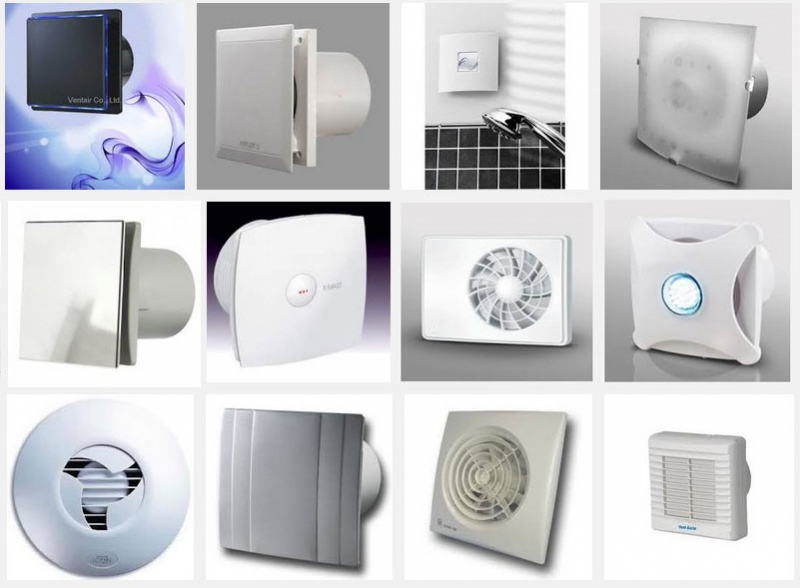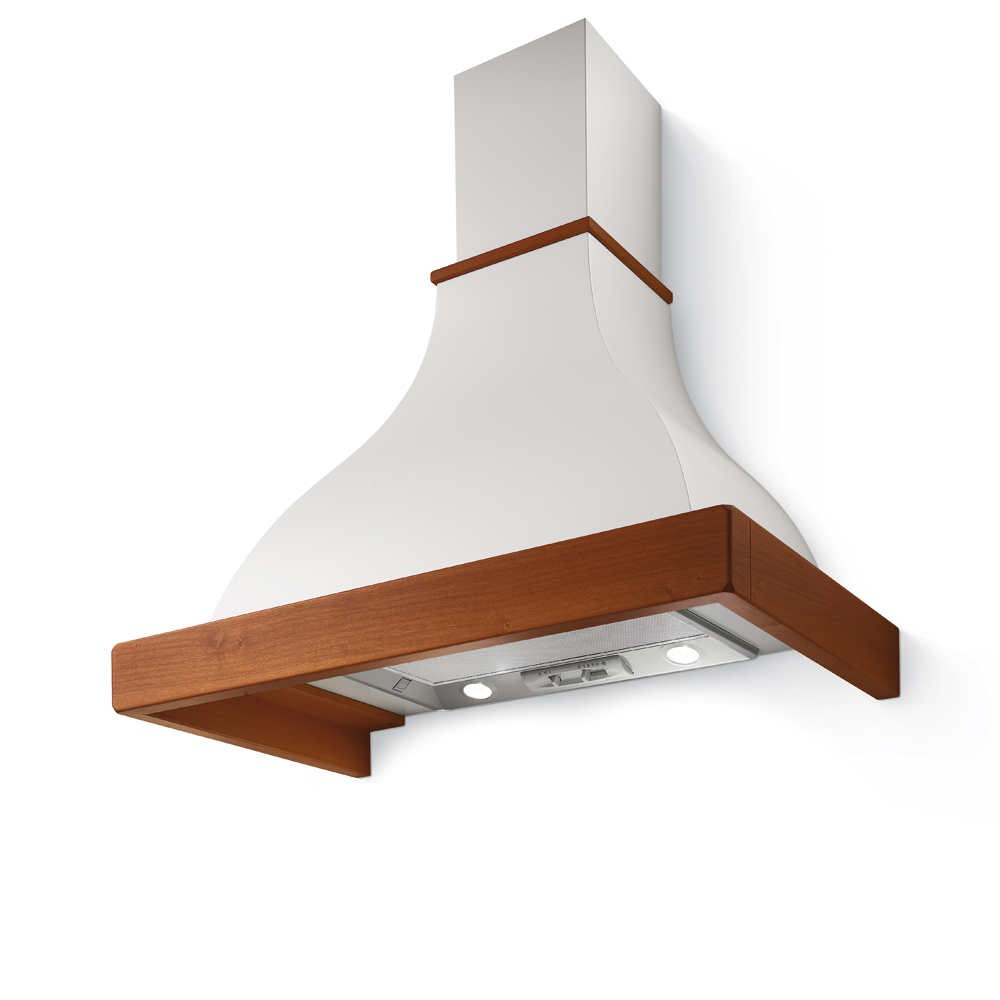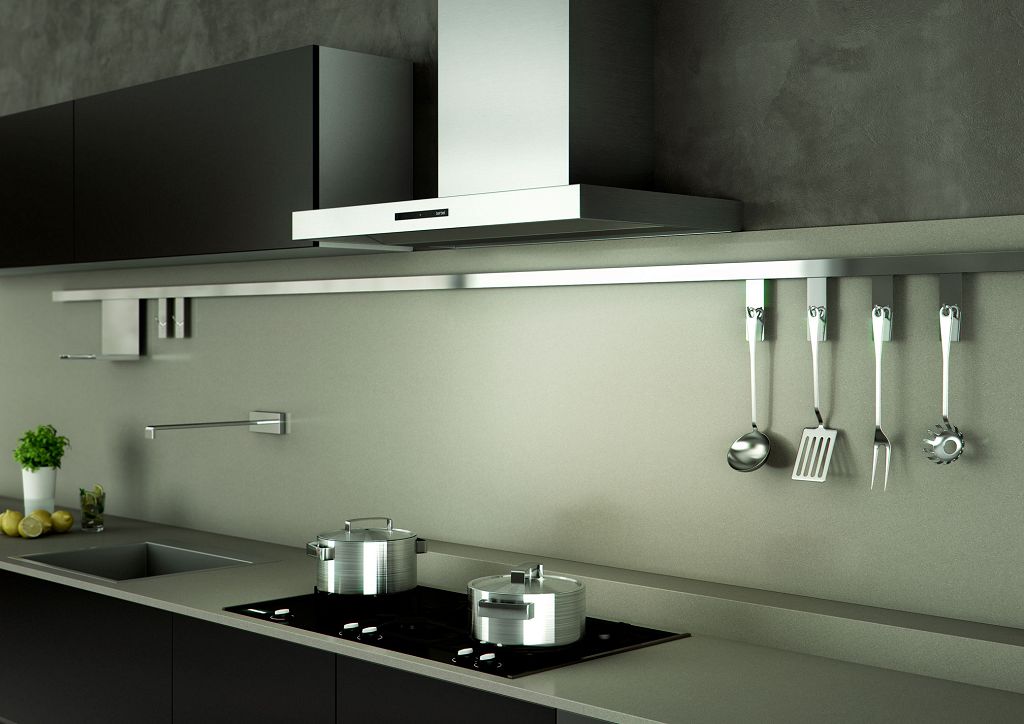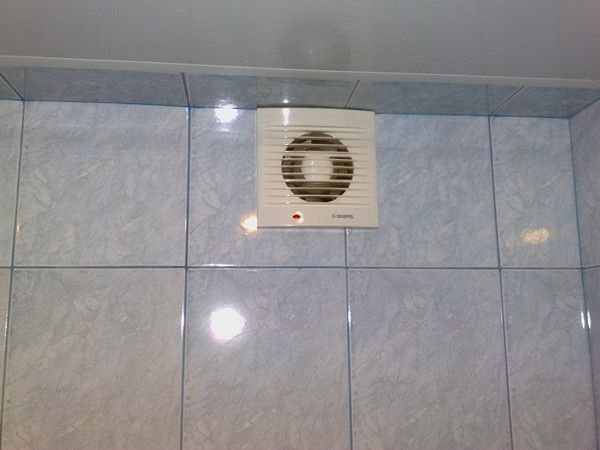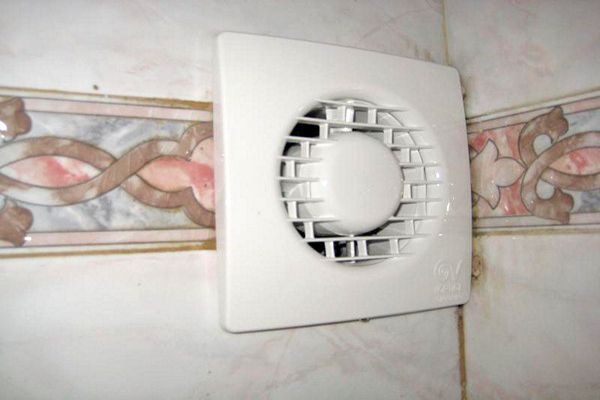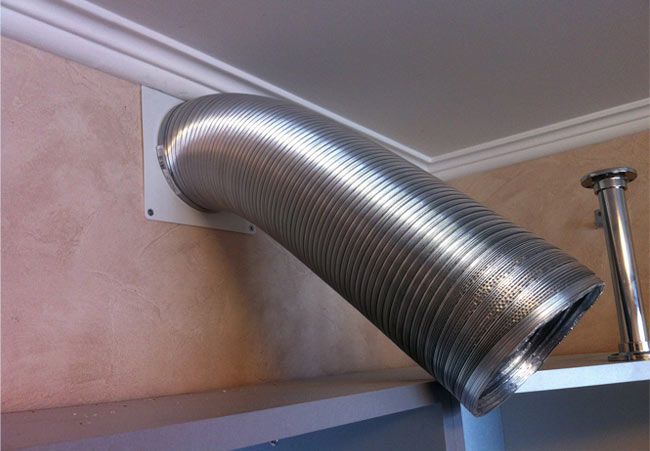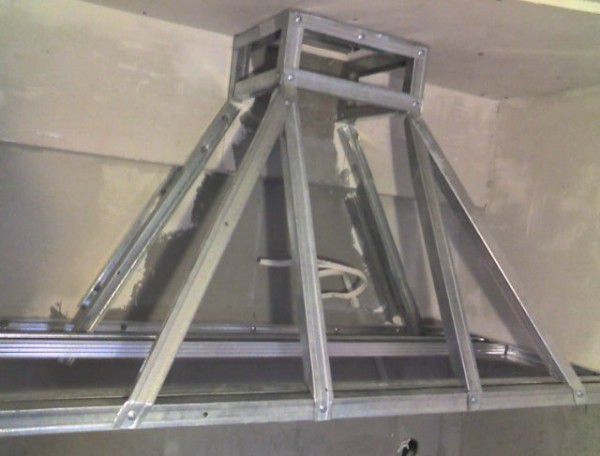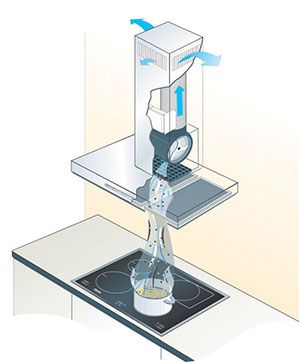One of the most important elements of the production process is to ensure comfortable working conditions. The condition and composition of air masses in any industry often requires adjustment due to dust, vapor and gas emissions, excessive humidity, high temperatures or toxic impurities. Depending on the characteristics of the technological process, these factors affect not only the health of workers, but also the tightness of the equipment.
An acceptable temperature regime, comfortable humidity and the removal of waste air masses contaminated with impurities are provided by an exhaust ventilation system. It should not be confused with the supply air, which is designed to pump fresh air into the premises, although both of them perform their functions using special equipment - fans or ejectors.
An exhaust system using radial or centrifugal fans is widely used in industry.
Exhaust systems using radial fans
Effective and simple devices enjoy well-deserved popularity in everyday life. The snail hood, as such fans are called in another way, quickly copes with the elimination of odors, excessive humidity, lowering the temperature in the kitchen, bathroom, garage, basement or cellar. Such systems are used, for example, in boiler rooms or apartment buildings.
The figure shows a circuit that provides air extraction using a radial fan.
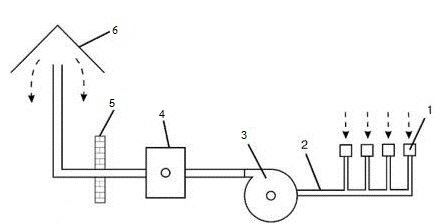
Design
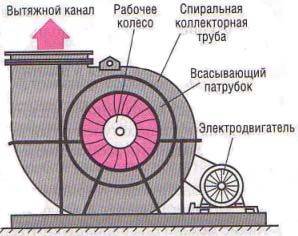
The ease of assembly and the availability of structural elements have led to the fact that radial fans are assembled not only at the factory, but also at home. After all, industrial assembly, although it has a quality guarantee, is not always available in the price range and in the required configuration for small residential or utility rooms.
The design of a standard centrifugal fan requires the presence of:
- The suction pipe, which receives the exhaust gas-air masses.
- Working (turbine) wheel equipped with radial blades. Depending on the purpose, they can be bent forward or backward from the angle of rotation. In the latter case, the bonus will be energy savings of up to 20%. They provide acceleration and also set the direction of air movement.
- A spiral collector pipe or a spiral casing, due to which the structure was named a snail. It is designed to reduce the speed of movement of the air driven through the device.
- Exhaust duct. Due to the different speed at which the air masses move in the suction nozzle and in the spiral casing, a sufficiently strong pressure is created here, which can reach up to 30 kPa in industrial conditions.
- Electric motor.
The dimensions of the volute, the power of the engine, the angle of rotation and the shape of the blades and other features depend on the scope and specific conditions of use.
Operating principle
The efficiency of snail extraction systems is based on their simple principle of operation.
During operation, the electric motor starts the rotation of the impeller.
A turbine wheel with radial blades, due to centripetal motion, is sucked in through the nozzle and accelerates the gas-air masses.
Their movement is transmitted by the rotational nature of the centrifugal force of the blades. This provides a different vector to the input and output streams.
As a result, the outflow is directed into the spiral casing. The spiral configuration provides deceleration and subsequent supply of pressurized flow into the exhaust duct.
From the exhaust duct, the gas-air masses are discharged into the air ducts for further cleaning and emission into the atmosphere.
If shut-off valves are provided in the air ducts, the radial fan can function as a vacuum pump.
Views
The scale of the premises, as well as the level of pollution and heating of the air in them, require the installation of exhaust systems of the appropriate size, power and configuration. Therefore, centrifugal fans are of various types.
Depending on the level of pressure created by the air masses in the exhaust duct, they are classified into fans:
- Low pressure - up to 1kPa. Most often, their design provides for wide leaf blades, which are bent forward towards the suction nozzle, with a maximum rotation speed of up to 50 m / s. The scope of their application is mainly ventilation systems. They create a lower noise level, as a result of which they can be used in rooms where people are constantly located.
- Medium pressure. In this case, the level of load created by the movement of air masses in the exhaust duct can be in the range from 1 to 3 kPa. Their blades can have a different angle and direction of inclination (both forward and backward), withstand a maximum speed of up to 80 m / s. The scope of application is wider than that of low pressure fans: they can also be installed in process plants.
- High pressure. This technique is used primarily for process plants. The total pressure in the exhaust duct is from 3 kPa. The power of the installation creates a peripheral speed of the suctioned masses of more than 80 m / s. Turbine wheels are equipped exclusively with backward curved blades.
Pressure is not the only feature that distinguishes radial fans. Depending on the speed of the air masses, which is provided by the impeller, they are divided into two classes:
- Class I - says that frontally curved blades provide a speed of less than 30 m / s, and back curved blades - no more than 50 m / s;
- Class II includes more powerful units: they provide a speed of the driven air masses higher than Class I fans.
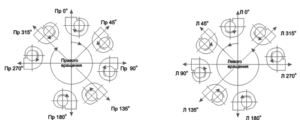
In addition, the devices are manufactured with different directions of rotation relative to the suction pipe:
- oriented to the right can be installed by turning the body clockwise;
- to the left - counterclockwise.
The scope of application of snails largely depends on the electric motor: its power and the method of attachment to the impeller:
- it can pick up speed directly on the motor shaft;
- its shaft is connected to the motor by means of a coupling and is fixed by one or two bearings;
- using a V-belt transmission, provided it is fixed with one or two bearings.
Restrictions on use
It is advisable to install radial fans to move large volumes of gas-air masses, provided that they do not contain:
- explosives;
- fibrous materials and sticky suspensions in the amount of more than 10 mg / m3;
- explosive dust.
An important condition for operation is the temperature regime of the environment: it should not go beyond -40 0From to +45 0C. In addition, the composition of the passing gas-air masses should not contain corrosive agents that contribute to the accelerated destruction of the fan flow path.
Of course, for use in some industries, fans are produced with a high degree of corrosion resistance, protection from sparks and temperature drops with housings and internal components made of high strength alloys.

